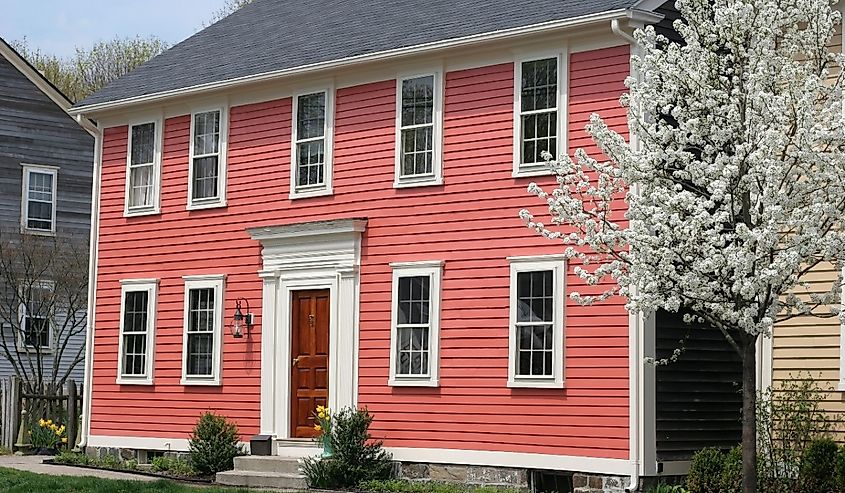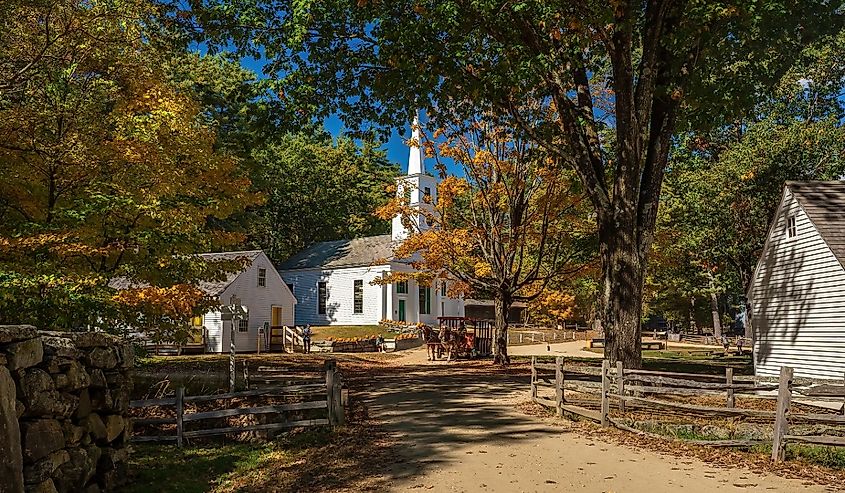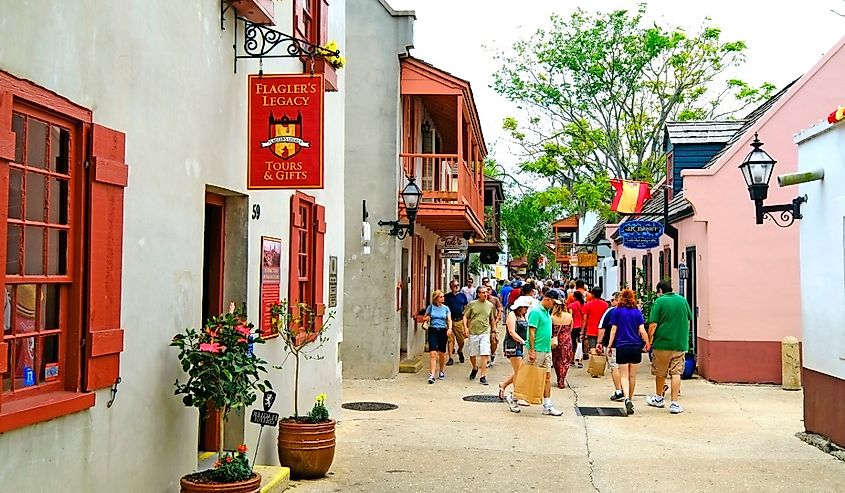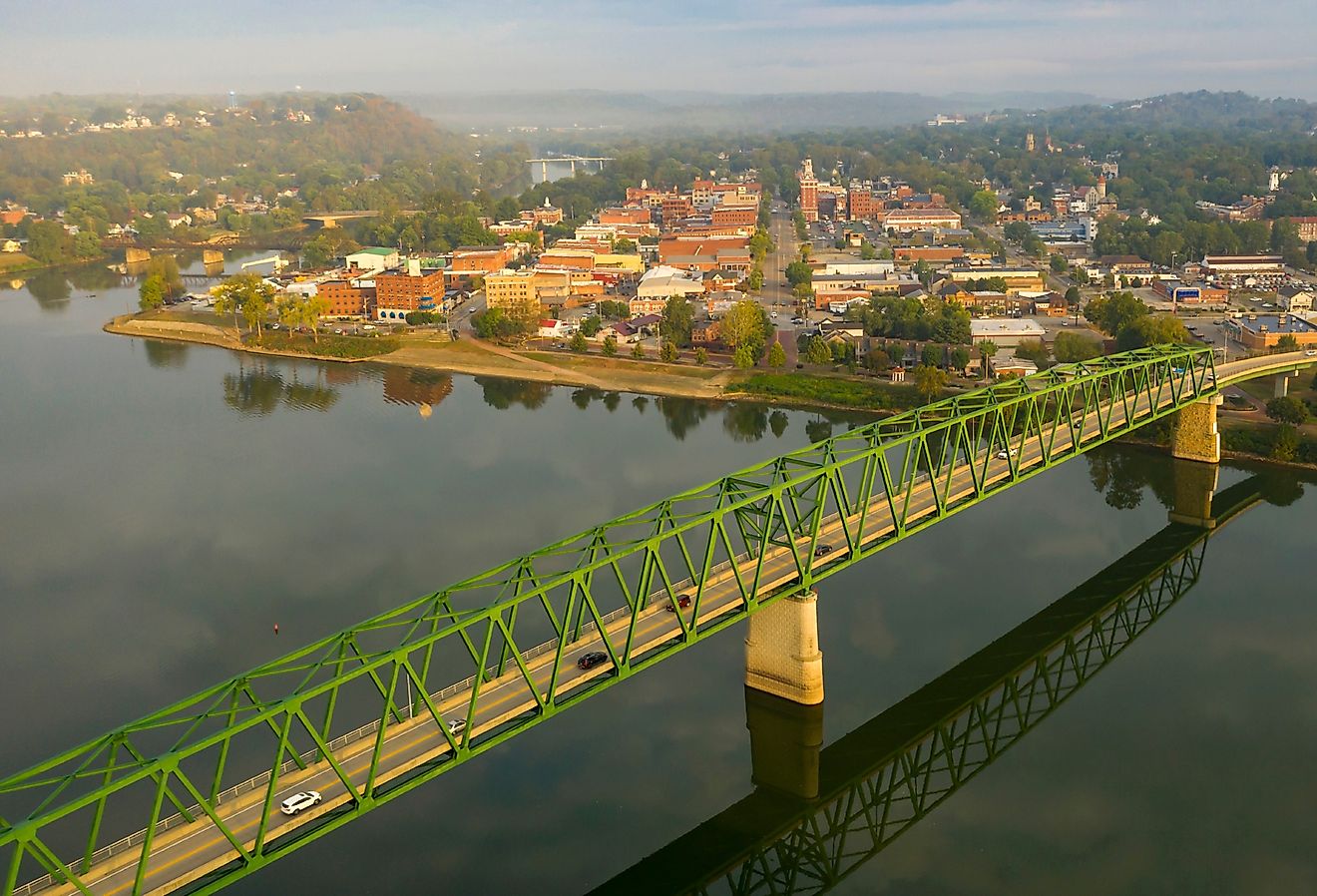
6 Towns In The United States That Transport You to the Past
The United States is steeped in all shades of history, and some of these histories are best preserved in small towns where time seems to have paused since centuries long forgotten. A visit to these towns is like stepping inside a time machine as America's golden past unveils itself in different dimensions. Visitors here will learn the ways of America’s pioneers and founding fathers and how they lived their daily lives across museums, landmarks, and living history villages. From St. Augustine, the acclaimed oldest city in the US, to Taos, where unique structures reflect life in ancient times, it's all about a blissful ride backward in time across these towns.
Wickford, Rhode Island

Wickford is quite a small hamlet in the town of North Kingstown but brims with old-world charms and houses one of the largest assemblages of 18th-century buildings in the North East. The city was founded in 1637 when the state's founder, Roger Williams, procured a parcel of land from the area’s Narragansett tribe and built a trading post there. These days, tourists and history buffs visiting will be stunned by the array of 17th and 18th-century buildings still in their original conditions spread across the small historic village.
Some of these notable structures and vehicles that transport visitors to the past include the Old Narragansett Church, built in 1707, and the Smith's Castle, built in 1678. A walk through its downtown will reveal more of these buildings and feel like a trip back in time. Afterward, visitors can head to the beach to bask in the sun, enjoy picnics, stroll, and admire sailboats. Visitors are also welcome to rent a boat or kayak and explore the waters or visit the harbor to enjoy lunch in one of its restaurants, like Tavern by the Sea.
Taos, New Mexico

Taos is one of the oldest towns in the US, first founded in 1615 after the Spaniards conquered the Indian Pueblo villages. From then on, there were several revolts and resistance against Spanish settlers by the natives until New Mexico became a US territory in the 1850s. The history of Taos mainly revolves around the Taos Pueblos, one of the oldest, continually occupied settlements in the US built from stone and adobe. The Taos Pueblos, which is a UNESCO World Heritage Site, sits just a mile north of the present-day town of Taos and has been inhabited for more than 1,000 years. Tourists find these adobe multi-story structures fascinating and reflective of ancient stone dwellings. They symbolize how ancient architecture survived through the centuries and offer deep insights into the living conditions of pioneers, with some of the rooms only accessible by a ladder.
The Kit Carson Home and Museum (1825) is another fascinating historic site in town to visit as it provides more insights into how people lived in the 19th century. Also, visit the Martinez Hacienda and Blumenschein Home and Museum to learn more about the town's history, ancient architecture, and culture. The art scene in Taos is also noteworthy as it hosts several art museums like the Taos Art Museum and Millicent Rogers Museum.
Jonesborough, Tennessee

Jonesborough is the oldest town in Tennessee and the renowned Story Telling Capital of the World. It was founded in 1779 by European Americans under North Carolina, 17 years before Tennessee became a state. The town was named after North Carolina's lawmaker, Willie Jones, who championed the state's expansion towards the Appalachian Mountains. Today, the city is a delightful zone for history lovers, with many attractions. For starters, Christopher Taylor's House, built in 1777, is worth walking by (as it's no longer open for tours) as it is the town's oldest surviving building in the historic district.
The Historic Chester Inn Museum, built in 1797, is another historic attraction in town that still stands downtown and was once renowned as a center for political discussions. Check out the Washington County Courthouse and spend time at the International Storytelling Center, featuring performances and exhibits around the oral storytelling culture of the US. Also, visit the Chuckey Railroad Depot Museum, which explores the town's railroad history in an original depot station built in 1906. Fans of the arts can stop by the Griffin Art Gallery to tour its amazing collections.
Sturbridge, Massachusetts

Sturbridge is a historic town in Massachusetts, renowned for its Old Sturbridge Village Living History Museum. The town first came into limelight in 1644 when English Puritans first visited. However, its first settlement was recorded in 1729 when Englishmen from Medfield established a base there, and it was eventually incorporated in 1738. The town continues to draw tourists and history lovers for its living history museum, the Old Sturbridge Village, which does a great job of transporting visitors to the past. Visit this village, which is also the largest living history museum in New England. It features 59 antique structures, a working farm, and three water-powered mills in its 200-acre area.
The village consists of three sections, the Center Village, Countryside, and Mill Neighborhood, all offering exhibits and recreations of life in rural New England between the late 18th and mid-19th centuries. After exploring the village, enjoy a rich seafood lunch at the Sturbridge Seafood Restaurant. Next, head to the Wells State Park for recreational pursuits, as it has 12 miles of trails for hiking and biking and the Walker Pond, where tourists can swim, fish, and paddle.
Jamestown, Virginia

Jamestown is one of the oldest towns in the United States, trailing behind Florida, and holds so much history for visitors. The town was founded in 1607 when around 100 Englishmen landed in North America to establish a settlement, which became the first permanent English settlement in North America. Today, history lives full-time in Jamestown, and its numerous attractions offer visitors a pleasurable ride to the past.
First off, the town hosts the Old Jamestown Settlement, recreating the Old Jamestown Settlement of 1607, which began as a fort and houses the three ships that sailed to Jamestown with the Englishmen. Historic Jamestown on Jamestown Island is also in the town and worth visiting as it houses the Jamestown Church, built with bricks from 1639, and stands as one of the oldest surviving buildings of the original thirteen colonies. Also, check out the statue of John Smith, one of the first settlers in the town, and the Tercentennial Monument marking the 300th anniversary of the settlement. Afterward, enjoy lunch at the Dale House Cafe, with charming views of the James River.
St. Augustine, Florida

St. Augustine, the highly exalted oldest city in America, was founded in 1565 by the Spaniards, and no town could be more appropriate to transport one into the past than this quaint Florida town. It was established by the first governor of Florida, a Spaniard, Pedro de Menendez de Aviles. St. Augustine would serve as the capital of Spanish Florida for 200 years until Spain ceded the territory to the US in 1819. Today, the town is remarkable for its preserved Spanish colonial architecture, historic forts, monuments, and landmarks.
One of its highlighted historic attractions worth visiting is the Castillo de San Marcos Monument, the oldest masonry fort in the US. It is by the Matanzas Bay and was built between 1672 and 1695. Visit the fort and then head to the St. Augustine Lighthouse and Maritime Museum to explore the city's over 500 years of Maritime history through marine exhibits and programs. Other historical sites to check out include the Oldest Wooden Schoolhouse (circa 1716), the Old Jail Museum, the Pirates & Treasure Museum, the Colonial Quarter, the Lightner Museum, and the Medieval Torture Museum. After touring the town’s iconic past, visitors can always cool off at one of its beaches, like Crescent Beach, and enjoy lunch at Harry's Seafood Bar and Grille.
Stories about America's glorious past are always interesting and insightful. However, nothing beats the experience of immersing in the country’s past across towns that offer more than a glimpse into what life was like many centuries ago. As tourists walk through these towns, the stories make more sense with interesting, historic sights and sounds. From 18th-century buildings to landmarks, artifacts, and exhibits, history buffs will experience the past in real time beyond what lies in books.











